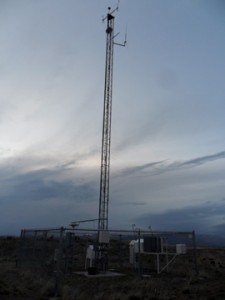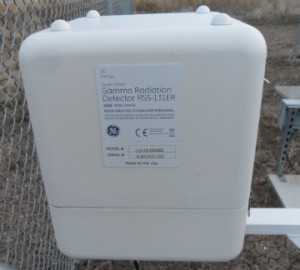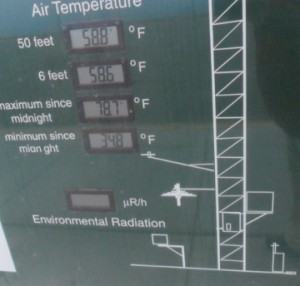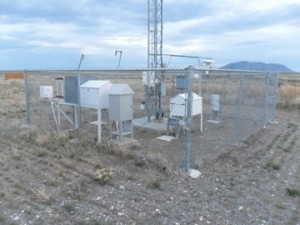Due to the Tohoku-Chihou-Taiheiyou-Oki Earthquake which occurred on 11 March 2011, TEPCo’s facilities including our nuclear power stations have been severely damaged. We deeply apologize for the anxiety and inconvenience caused.
With regard to the accident at Fukushima Daiichi Nuclear Power Station, on 17 April 2011, we have compiled the roadmap towards restoration from the accident and on 19 July we accomplished the Step1 target “Radiation dose is in steady decline”. Then on 16 December we confirmed the accomplishment of the Step 2 target “Release of radioactive materials is under control and radiation doses are being significantly held down”. In addition, on 21 December 2011, we have compiled the “Mid-to-long-Term Roadmap toward the Decommissioning of Fukushima Daiichi Nuclear Power Units 1-4, TEPCO”, for which we’re currently working towards.
Along with the roadmaps mentioned above, we have been evaluating the amount of radioactive materials released into the air and the ocean as a result of the accident. The evaluation result (as of May 2012) is provided below.
As for the amount of radioactive materials released into the air, the evaluation was done from March 12 to 31, 2011. The estimated release amounts are as follows.
Noble gas: Approx. 5×1017 Bq
Iodine 131: Approx. 5×1017 Bq
Cesium 134: Approx. 1×1016 Bq
Cesium 137: Approx. 1×1016 Bq
The amounts of radioactive materials released in April and later in 2011 are not taken into account in this evaluation result as the released amounts were less than 1% of that in March 2011, which are considered to be insignificant.
As for the amount of radioactive materials released into the ocean, the evaluation was done from March 26 to September 30, 2011. The estimated release amounts are as follows.
Iodine 131: Approx. 1.1×1016 Bq
Cesium 134: Approx. 3.5×1015 Bq
Cesium 137: Approx. 3.6×1015 Bq
As the equipments to directly measure the density of radioactive materials (such as the exhaust stack monitor) were unavailable due to the accident, the amount of radioactive materials released into the air was estimated by entering the measurement data (air dose rate, wind direction and wind speed) acquired by the monitoring cars in the power station and the observed values provided by the Japan Meteorological Agency into a program which calculates the amount of radioactive materials diffused into the air, with an assumption that the release rate of radioactive nuclides remains consistent. The evaluation result was then compared with the contamination density measurement result of soil provided by the Ministry of Education, Culture, Sports, Science and Technology, and our evaluation result has been validated.
However, further data still needs to be collected to review the validity of our evaluation result, considering that the data was acquired only in a limited area (in the power station site) and that the evaluation was done under the assumption that the release rate of radioactive nuclides is consistent though it should actually vary for each nuclide and depending on the status of reactors (the release rate was estimated based solely on the small amount of data obtained during the evaluation period).
The amount of radioactive materials released into the ocean was estimated based on the monitoring data of radioactivity density of materials included in the seawater near the north/south water discharge channels at the power station. The evaluation was done at the Central Research Institute of Electric Power Industry by utilizing a program which calculates the diffusion of radioactive materials into the ocean.
However, further data still needs to be collected to review the validity of our evaluation result, considering that the evaluation was done based on a small amount of data acquired in a limited area (monitoring data of radioactivity density of materials included in the seawater near the north/south water discharge channels at the power station), and that individual evaluation was not done for each release factor (radioactive materials directly released from the power station, fallouts from the air, rainwater inflow, etc.).
We will continue our utmost efforts in maintaining the stable condition of our nuclear power stations and implementing the measures to decommission Units 1-4.
< Attachment >
–Estimated Amount of Radioactive Materials Released into the Air as a Result of the Accident Occurred at Fukushima Daiichi Nuclear Power Station (PDF 115KB)
–Estimated Amount of Radioactive Materials Released into the Ocean (Near the Port) (PDF 88.2KB)
< Reference >
–Methods Used to Estimate the Radioactive Materials Released into the Air [Outline] (PDF 240KB)
–Estimation Result of the Amount of Radioactive Materials Released into the Ocean (Near the Port) (PDF 334KB)
–Estimated Amount of Radioactive Materials Released into the Air as a Result of the Accident Occurred at Fukushima Daiichi Nuclear Power Station [Report] (PDF 4.30MB)
English version of “Estimated Amount of Radioactive Materials Released into the Air as a Result of the Accident Occurred at Fukushima Daiichi Nuclear Power Station” , “Estimated Amount of Radioactive Materials Released into the Ocean (Near the Port)” , “Methods Used to Estimate the Radioactive Materials Released into the Air [Outline]” , “Estimation Result of the Amount of Radioactive Materials Released into the Ocean (Near the Port)” is now being developed.
We will post the translated material one by one when it is prepared.
The attached file titled “Estimated Amount of Radioactive Materials Released into the Air as a Result of the Accident Occurred at Fukushima Daiichi Nuclear Power Station [Report]” is only available in Japanese.
We apologize for any inconvenience this may cause.



